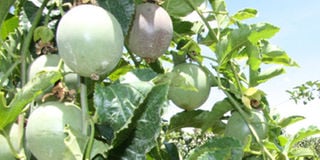Premium
Hardening off of passion seedlings

Passion fruit.
Photo credit: File
After grafting passion fruit seedlings, the next step is hardening off. This prepares the seedlings for the harsh conditions. It is a gradual process of acclimatising the young plants to outdoor conditions, ensuring they are strong and resilient.





